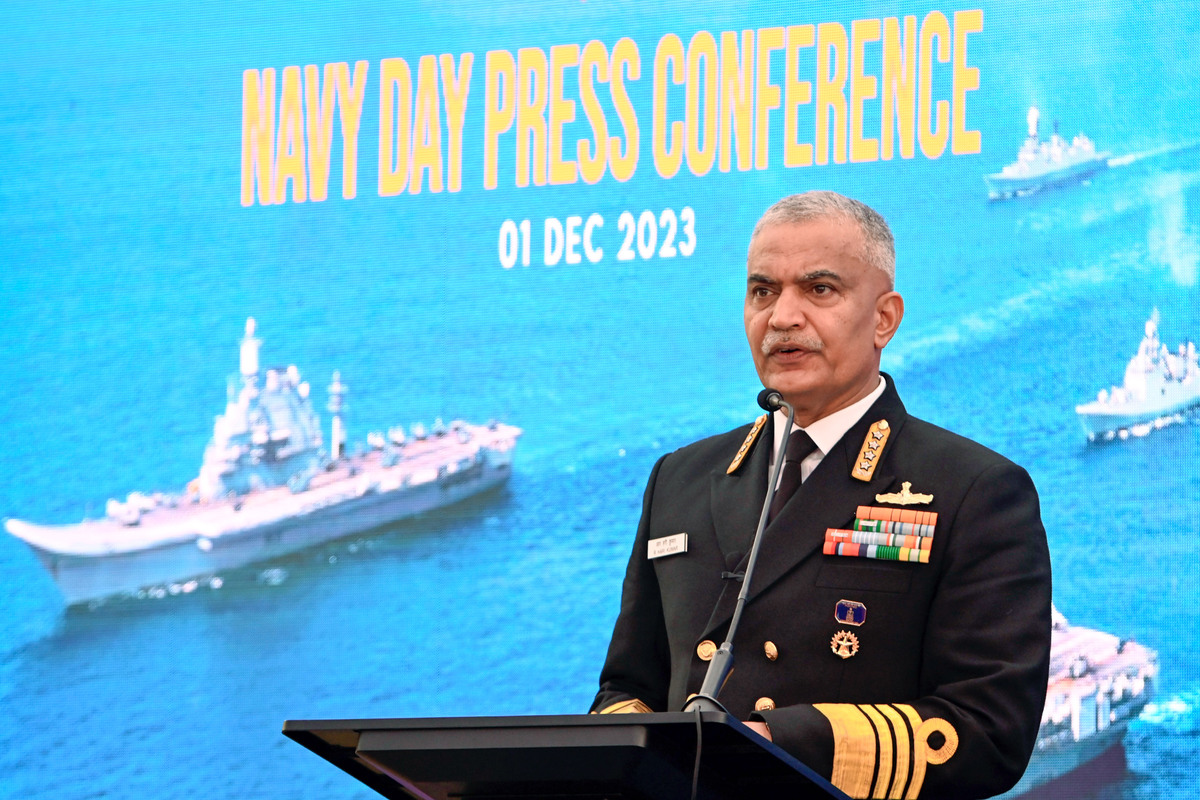Chief of the Naval Staff, Admiral R Hari Kumar on Friday said that more than 1,000 women ‘Agniveers’ have been incorporated into the force and asserted that India is the resident power in the Indian Ocean region, notwithstanding the growing Chinese presence in the area.
At a press conference here, he lauded the Agnipath scheme and said its implementation has been a much-needed, transformational change.
“Our first batch of ‘Agniveers’ graduated from the premier-winning establishment, INS Chilka, in March this year. And importantly, this batch of Agnivirs includes 272 female Agniveer trainees as well,” Admiral Kumar said.
“And going further, the second batch of ‘Agniveers’ had a total of 454 women and I want to say that with the third batch, which has just been inducted, we have now crossed over 1000 women affiliates in the navy,” he added.
Admiral Kumar asserted that these statistics stand testament to the Indian Navy’s philosophy of all roles and all ranks with regard to the deployment of women in the service, both for officers and for personnel below the rank of officer.
“We also appointed the first woman commanding officer of an Indian naval ship. It has been our effort to constantly challenge the status quo to ensure that the navy remains on an aspirational and dynamic trajectory into the future,” said Admiral Kumar.
On the increasing grip of China on the Indian Ocean region, he said Beijing may have legitimate reasons to be in the region but India is the resident power in it.
“The oceans are considered to be a common heritage; they can be used for the legitimate economic aspirations of any nation. So in that regard, if you look at China, it may have a legitimate reason to be present in the Indian Ocean region for economic activities. But we, as the resident naval power in the Indian Ocean, keep an eye on what all is happening there,” the Naval chief said.
“We try to keep the extra regional forces that are present in the region under surveillance and keep a watch on their activities–what are they engaged in, what are their intentions and so on. So, that is why we deploy our surveillance assets–ships, submarines, aircraft, UAVs and others. So they’re deployed regularly to keep our area of interest and observation.”
The Chief of Naval Staff, speaking on how friendly operations and exercises with friendly foreign countries help the Indian Navy, said that the task of the Indian Navy is to protect, preserve, promote, and pursue Bharat’s national interest in the maritime domain, wherever they lie.
“Our interests are there in the Indian Ocean region and beyond when you look at the Indo-Pacific. So our ships, submarines, and aircraft are deployed accordingly. We try to keep our area of interest under surveillance,” he said.
Admiral Kumar also talked about the naval air surveillance part and said that, looking at the surveillance aspect, each of the platforms comes with a particular type of capability.
“When you talk of the P-8I, while it has a secondary role for surveillance, it is essentially a submarine warfare aircraft. It is basically an asset that is meant to detect localised and targeted submarines. But when it is not engaged in the task, it can also be used for surveillance.”
He also mentioned numerous other primary assets for surveillance but he stated that when an entire ocean area is looked upon, assets with different capabilities will be required. So we have to divide the area that we want to keep under surveillance with different types of assets.












